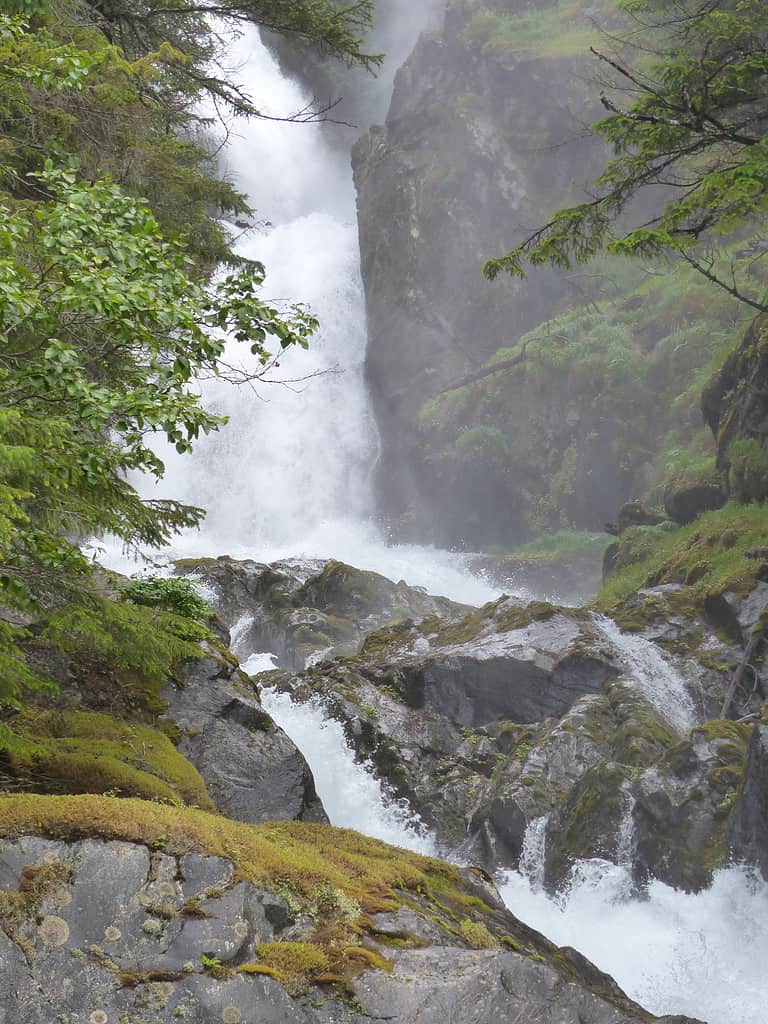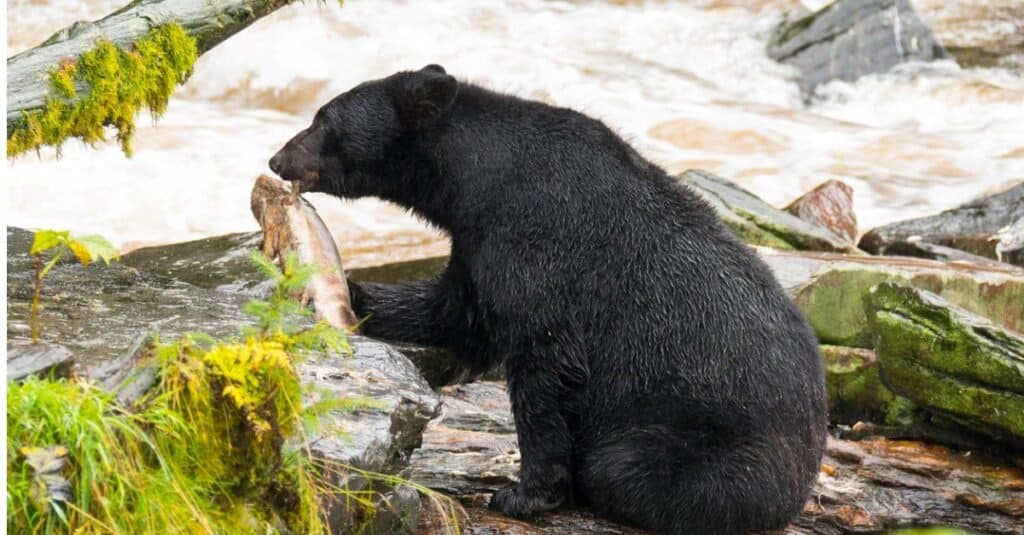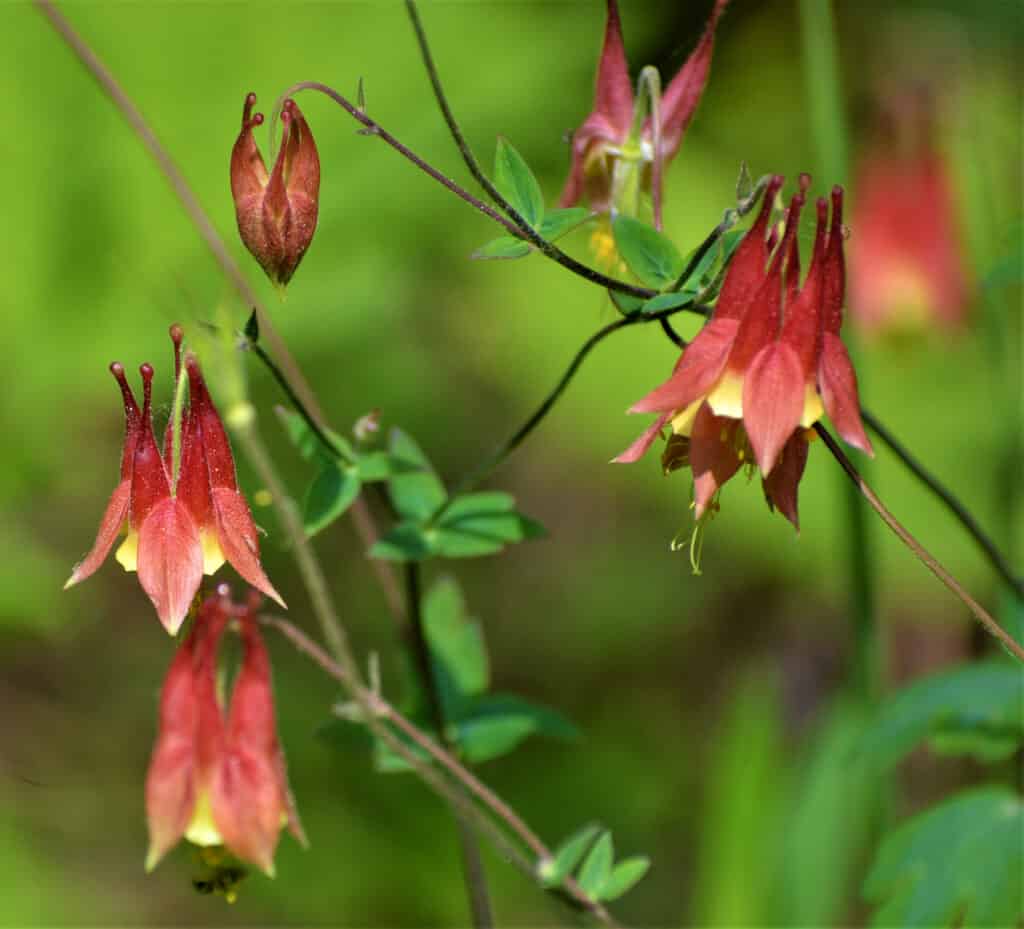The rugged and pristine wilderness of Alaska is home to some of the most stunning works of natural beauty on the planet. And one of the most impressive is the tallest waterfall in the state. With a breathtaking drop of over 2,100 feet (640 meters), Pitchfork Falls, on the outskirts of Skagway, is the tallest waterfall in Alaska. This towering cascade is a true marvel of nature that inspires awe and wonder in all who see it. From its pitchfork shape to its thundering roar, the tallest waterfall in Alaska is a must-see destination. Anyone who loves experiencing the power and beauty of nature should put Pitchfork falls on their bucket list. Keep reading to discover everything this is to know about the tallest waterfall in Alaska!

©fabio oliveira2020/Shutterstock.com
Where is Pitchfork Falls Located on a Map?
Skagway is nestled in the Northern part of the Alexander Archipelago, near the border with British Columbia, Canada in the Southeast region of Alaska. Skagway was founded in 1897 during the Klondike Gold Rush. The discovery of gold in Canada sparked a rush of prospectors to the area. Skagway quickly became an important gateway to the goldfields. The town grew rapidly as thousands of people passed through on their way to the Yukon. It played a key role in the development of the region. Today, Skagway is a popular tourist destination known for its rich history and natural beauty. The waterfall is not easily accessible. It requires a difficult hike or helicopter tour to reach. It is known for its spectacular views and impressive height.
Origin and Meaning of the Name Skagway
The name Skagway is derived from the Tlingit word sha-ka-ԍéi which translates to rough waters caused by the north wind. The Tlingit people have lived in the area for thousands of years. They gave the name to the nearby Skagway River, which is known for its turbulent waters. The name was later adopted by European settlers who came to the area during the Klondike Gold Rush. The town of Skagway as a major transportation hub for gold prospectors heading to the Yukon region of Canada.

Goat Lake Reservoir, Skagway, Alaska.
©L. M. Dunn/Shutterstock.com
The Tallest Waterfall in Alaska: Pitchfork Falls
The name Pitchfork Falls comes from the shape of the waterfall, which resembles the prongs of a pitchfork. The waterfall consists of three main sections, each of which drops at a slightly different angle, creating a distinctive pitchfork shape. The name is a nod to this feature of the waterfall. It has been used by locals and visitors alike to refer to the falls for many years. Pitchfork Falls emenate from the waters of Goat Lake, before dropping over 2000 feet (600 m) to the base of the falls at the Skagway River.

A section of Pitchfork Falls, Skagway, Alsaka.
©Lflorot/Shutterstock.com
Fauna at the Falls
- Brown and black bears: These large predators are found throughout Southeast Alaska, including the Skagway area.
- Moose: These large herbivores can often be spotted in forested areas and wetlands around Skagway.
- Mountain goats: These sure-footed animals can be seen on rocky slopes and cliffs in the mountains surrounding Goat Lake.
- Bald eagles: These iconic birds of prey are abundant in Southeast Alaska and can often be seen perched in trees or soaring overhead.
- Salmon: Several species of salmon, including Chinook, coho, and sockeye, can be found in the streams and rivers around Skagway, including those that feed into Goat Lake.
- Other wildlife: Other animals that can be found in the Skagway area include wolves, coyotes, foxes, beavers, otters, minks, and reindeer.

Black bears, like this one enjoying a meal of salmon, are found throughout Southeast Alaska. So are salmon.
©iStock.com/ElliotHurwitt
Flora at the Falls
- Trees: Sitka spruce, hemlock, and cedar trees: These coniferous trees are common in the area and provide a habitat for a variety of wildlife.
- Wildflowers: During the summer months, visitors to the Skagway area can see a variety of wildflowers, including chocolate lily, columbine,fireweed, and lupine.
- Berries: Blueberries, raspberries, and ligonberries are abundant in the region and provide a food source for wildlife and humans alike.
- Mosses and lichens: The wet climate of the Skagway area supports a variety of mosses and lichens, which can be seen covering rocks and tree trunks.
- Alpine tundra: Above the treeline, visitors can see alpine tundra vegetation, including grasses, sedges, and wildflowers.

Columbine is one of the many wildflowers that grow in Southeast Alsaka.
©akslocum/Shutterstock.com
Frolic at the Falls
- Chilkoot Trail: This historic trail was used by gold seekers during the Klondike Gold Rush and offers a challenging hike through rugged wilderness. The trailhead is located in Dyea, just outside of Skagway. Of note: The Chilkoot Trail is presently closed (spring 2023) as a result of extensive flood damage. Learn more here.
- Klondike Gold Rush National Historical Park: This park commemorates the Klondike Gold Rush of 1897-98 and includes several sites and trails throughout Skagway.
- Tongass National Forest: This vast forest covers much of Southeast Alaska and offers numerous opportunities for hiking, camping, fishing, and wildlife viewing.
- Chilkoot Lake State Recreation Area: This park offers camping and picnicking facilities, as well as access to nearby hiking trails and fishing spots. ChilkootLake State Recreation Arear is located 24 miles (40 km) south of Skagway. During the summer, a car ferry operates between Skagway and Haines, Alaska. A one-way trip takes about 2 hours.
The photo featured at the top of this post is © fabio oliveira2020/Shutterstock.com
Thank you for reading! Have some feedback for us? Contact the AZ Animals editorial team.






